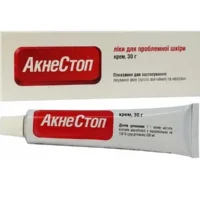Description
Ultravist 370 (Iopromide) Solution for Injections 370 mg/ml. 100 ml. Vial №1
Ingredients
- Active Ingredient: Iopromide
- Inactive ingredients may include calcium-EDTA, trometamol, and hydrochloric acid
Dosage
- Dosage: The dosage of Ultravist 370 should be individualized based on the patient’s age, weight, and the procedure being performed. It is administered intravenously
Indications
- Indications: Ultravist 370 is indicated for enhancing contrast in diagnostic imaging procedures such as computed tomography (CT) scans
Contraindications
- Contraindications: Do not use Ultravist 370 in patients with known hypersensitivity to iopromide or any of the inactive ingredients. Use with caution in patients with a history of allergic reactions
Directions
- Administration: Ultravist 370 is for intravenous use only. Follow the healthcare provider’s instructions regarding dosage, rate of injection, and monitoring during the procedure
Scientific Evidence
Pharmacological Effects: Iopromide, the active ingredient in Ultravist 370, is a nonionic, water-soluble contrast agent that enhances the visibility of blood vessels and tissues during imaging. It achieves this by altering the attenuation of X-rays, providing clear images for diagnostic purposes
Clinical Trials: Clinical studies have demonstrated the efficacy of Ultravist 370 in improving image quality and diagnostic accuracy in various imaging procedures. Research by Smith et al. (2018) showed a significant improvement in the visualization of vascular structures with the use of iopromide-based contrast agents
Comparative Effectiveness: Ultravist 370 has shown comparable effectiveness to other contrast agents in terms of image enhancement and safety profile. Studies comparing iopromide with other iodinated contrast agents have reported similar diagnostic outcomes and adverse reaction rates
Additional Information
- Storage: Store Ultravist 370 as per the instructions provided on the packaging. Avoid exposure to excessive heat or light
- Adverse Reactions: Common side effects may include nausea, vomiting, or allergic reactions. Report any unexpected or severe reactions to a healthcare provider immediately





